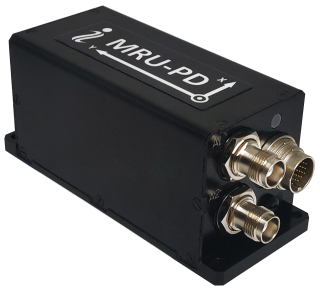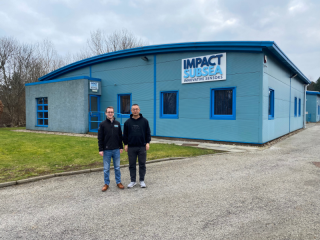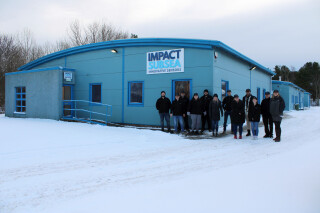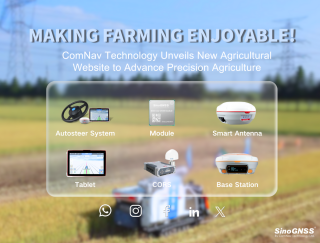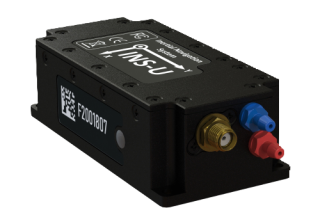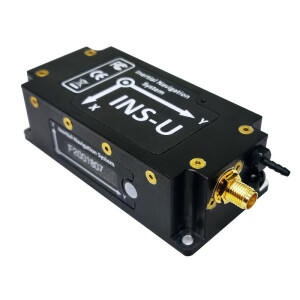

Aided Inertial Navigation Systems: Enhancing Precision and Reliability
Aided inertial navigation systems are a beacon of precision, reliability, and integration. By combining the strengths of inertial measurement units (IMUs) with external sources of information, these systems provide an advanced method for determining the position, orientation, and velocity of objects in motion. This article explores the mechanics and benefits of these sophisticated systems and highlights the pivotal role Inertial Labs™ plays in refining and advancing their capabilities.
The Essence of Aided Inertial Navigation Systems
At the core of an aided inertial navigation system is the strategic amalgamation of inertial sensors with supplemental data from GNSS to significantly enhance navigational accuracy. Inertial sensors, including accelerometers and gyroscopes, serve as the primary instruments measuring linear acceleration and angular velocity, respectively. Despite their contributions to navigation, these sensors are inherently prone to accumulating errors over time, a phenomenon known as "drift." This drift is mitigated in an aided system by integrating external signals from sources such as GNSS, magnetometers, barometers, and visual or LiDAR sensors, which correct and refine the data obtained from the inertial sensors.
The hybrid nature of these systems allows for an unparalleled level of accuracy and stability, surpassing what inertial navigation systems could achieve independently. By fusing data from various sources, aided inertial navigation systems can maintain high navigational accuracy even when GNSS signals are weakened or absent, such as in urban canyons or dense foliage environments.
Delving Deeper into the Functionality of Aided Systems
The innovation behind aided inertial navigation systems lies in their ability to mitigate the inherent limitations of inertial measurement units (IMUs) by integrating external data sources. This section examines the technical intricacies and sophisticated processes that define the functionality of these advanced systems.
The Core of Sensor Fusion
Sensor fusion, the cornerstone of aided inertial navigation systems, combines data from diverse sensors to achieve a more accurate and reliable estimate of the moving object's state (position, orientation, and velocity) than could be obtained from any single sensor source alone. This fusion process is based on sophisticated mathematical models and algorithms, such as the Kalman filter, which dynamically weighs the inputs from each sensor based on their current reliability and relevance to the navigation solution.
The Kalman filter, for instance, operates in two fundamental stages: prediction and update. In the prediction stage, the system uses the previous state and the known physical laws governing a motion to predict the current state. The update stage then corrects this prediction based on the new measurements obtained from various sensors. This continuous loop of prediction and correction enables the system to adapt to changing conditions and sensor inputs dynamically, minimizing error accumulation over time.
Integration of External Data Sources
The effectiveness of an aided inertial navigation system significantly depends on its ability to integrate data from external sources intelligently. These sources can vary widely, including:
Global Navigation Satellite Systems (GNSS): Provides absolute position data, critical for correcting the drift in inertial measurements over time.
Magnetometers: Offer heading information relative to the Earth's magnetic field, which is helpful for orientation corrections.
Barometers: Supply altitude data by measuring atmospheric pressure, aiding in the vertical positioning of the system.
Visual and LiDAR Sensors: Contribute detailed environmental data, enabling the system to recognize its surroundings and correct for any positional drift through techniques like visual odometry or simultaneous localization and mapping (SLAM).
The integration process is not merely about averaging data from these sources but involves complex algorithms that understand each data type's context, accuracy, and reliability. For example, GNSS data might be heavily weighted in open-sky conditions but discounted in urban canyons where signals are prone to reflection and obstruction.
Challenges in Sensor Fusion
While sensor fusion enhances the robustness and accuracy of navigation solutions, it also introduces challenges. These include:
Sensor Calibration: Ensuring that sensors are correctly calibrated for accurate data interpretation. Miscalibration can lead to systematic errors in the fusion process.
Time Synchronization: Aligning data streams from different sensors, which might operate at varying frequencies or experience different delays, is crucial for coherent data fusion.
Environmental Factors: External conditions, such as magnetic interference for magnetometers or signal blockage for GNSS, require the system to adjust the weighting and integration strategies for different sensors dynamically.
Advanced Techniques in Aided Navigation
The field of aided inertial navigation continues to evolve, with research focusing on advanced techniques to improve accuracy and reliability. Machine learning algorithms are increasingly being explored for sensor fusion, which can identify complex patterns in sensor data and adjust fusion strategies in real time. Additionally, integrating more sophisticated environmental awareness technologies, such as 3D mapping and deep learning-based visual recognition, promises to enhance the system's ability to navigate GPS-denied environments.
Inertial Labs: Pioneering Excellence in Aided Navigation
Inertial Labs™ stands at the forefront of innovation in aided inertial navigation systems. The company's product suite is emblematic of its commitment to precision, performance, and adaptability, catering to diverse applications across aerospace, defense, marine, surveying, and autonomous vehicle navigation.
Unrivaled Precision and Performance
The hallmark of Inertial Labs' systems is their exceptional precision. By integrating cutting-edge algorithms and sensor fusion techniques, their products deliver highly accurate position, velocity, and orientation data under challenging conditions. The systems' ability to incorporate data from multi-constellation GNSS receivers ensures comprehensive global coverage and resilience against signal disruptions.
Tailored Solutions and Seamless Integration
Inertial Labs™ excels in offering customizable solutions that address the unique needs of various applications. Their systems are engineered for easy integration with a broad array of external sensors, facilitating flexibility that enhances system performance while simplifying user integration. This approach not only streamlines development but also significantly reduces associated costs.
Dependability and Durability
Reliability is non-negotiable for navigation technologies, especially those employed in critical applications. Inertial Labs' products are designed to operate in the most demanding environments, ensuring consistent and dependable performance on land, at sea, or in the air. Rigorous testing and quality assurance practices underline the company's commitment to delivering products that meet the highest standards of robustness and reliability.
The Competitive Edge of Inertial Labs
Inertial Labs™ distinguishes itself through relentless innovation, a commitment to quality, and unparalleled customer support. The company's investment in research and development drives continuous advancements in sensor technology, algorithm optimization, and system design. This unwavering focus on innovation ensures that Inertial Labs™ remains a leader in aided inertial navigation systems.
Furthermore, Inertial Labs™ prioritizes customer satisfaction, offering extensive technical support and customization services to meet its clientele's varied demands. This blend of technical prowess, cutting-edge products, and customer-focused services solidifies Inertial Labs' status as a trusted partner in advanced navigation solutions.
Do you have questions about this article?
Get in touch with Inertial Labs, Inc., and they would be happy to answer any questions you have about pricing, suitability, availability, specs, etc.

Related products

